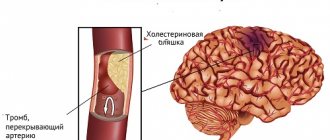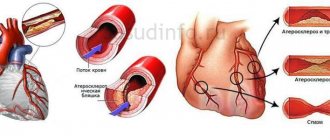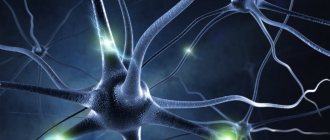What is hydrocephalus
Hydrocephalus or dropsy of the brain is a violation of the circulation of cerebrospinal fluid in the cerebrospinal fluid spaces of the brain, which causes its excess to develop. The normal, constant amount of cerebrospinal fluid (cerebral fluid) is 50 ml in a newborn, and about 130 - 140 ml in an adult.
The role of cerebrospinal fluid:
- serves as a shock absorber for the tissues of the brain and spinal cord, protecting them from injury and shock;
- normalizes the amount of blood in the vessels;
- provides nutrition to the brain and removal of waste products from it.
In a healthy person, cerebrospinal fluid is evenly distributed in the subarachnoid fissures, ventricles and cisterns. It is continuously produced and circulated, ensuring optimal brain function. CSF is produced by the choroid plexuses of the brain and absorbed into the systemic bloodstream in the parietal region. Thanks to the continuous circulation, the cerebrospinal fluid is constantly renewed, and decay products do not accumulate in it.
Cerebral fluid in dropsy:
- overproduced
or
- not completely absorbed into the systemic circulation.
As a result, it accumulates in the head and contributes to the enlargement of the cerebral ventricles, subarachnoid fissures and cisterns. Enlarged brain structures put pressure on brain tissue, causing various neurological disorders.
Causes of hydrocephalus
In adults, hydrocele develops at any age. It is an acquired disease that occurs under the influence of external factors. Pathology can arise as a complication after serious illnesses and injuries or in cases of disruption of the central nervous system (CNS).
Causes of hydrocephalus in adults:
- stroke and other acute circulatory disorders in the brain;
- oncology;
- infectious and inflammatory diseases – meningitis, encephalitis, tuberculosis;
- traumatic brain injuries, spinal injuries (usually the cervical area);
- disturbances in the functioning of the central nervous system;
- encephalopathy of any origin, including alcoholic;
- hemorrhages in brain tissue resulting from rupture of aneurysms or other vessels.
Hydrocephalus in newborns is one of the most common congenital pathologies. This disease can be diagnosed during fetal development.
The development of dropsy in utero is caused by:
- genetic predisposition;
- disorders in the development of the central nervous system;
- infections transmitted in utero;
- heredity - hydrocephalus is extremely rarely inherited. To do this, the woman must be a carrier of the defective gene, and the man must have hydrocephalus.
Pathology is often diagnosed in babies from the first months of life. And the earlier the disease was detected, the greater the chances of a complete cure. After all, an increase in cerebrospinal fluid entails an expansion of the brain spaces in which it accumulates, and the volume of the child’s head increases.
And stabilizing the size of the head, in the process of normalizing the outflow of cerebrospinal fluid, is possible only while the fontanelles have not grown together, and all brain systems are at the stage of formation. Therefore, if there are possible causes and predisposing signs of dropsy, it is imperative to undergo routine examinations by a pediatric neurologist.
Causes of hydrocephalus in newborns:
- birth injury resulting in hemorrhage or meningitis;
- malformations of cerebral vessels;
- malformations of the brain;
- as a complication after infections suffered in utero.
Treatment for adults
If a patient is diagnosed with dropsy of the brain, treatment is carried out only by experienced specialists. This is a serious and dangerous disease that can lead to serious consequences, including death.
To combat pathology, use:
- Drug therapy . This method is suitable for moderate dropsy. Adults are prescribed diuretics and medications that work to reduce intracranial pressure. To improve the patient's condition, a therapeutic massage may be prescribed.
- Bypass surgery is a common surgical procedure in which a catheter tube is installed into the patient’s cranial cavity. It drains excess fluid into the abdominal space. The amount of secretion leaving the brain cavities is regulated by special valves. Basically, the operation ends successfully and gives good results. Later the patient returns to a normal lifestyle. The disadvantage of shunting is the small size of the tube. It bends, can become clogged and prevent liquid from flowing through. In such cases, the shunt must be urgently replaced.
- Endoscopic ventriculostomy is a more modern and reliable method that treats hydrocele of the brain of mixed, replacement and symmetrical type. Using a neuroendoscope and a microscopic video camera, neurosurgeons see everything he does on a monitor. With minimal risk, the cerebrospinal fluid and the cause that caused the accumulation of secretions, for example, a neoplasm, are removed. The operation is performed once. It does not require repeated interventions or the introduction of foreign objects into the brain.
- Drainage . Used when it is impossible to get rid of secretion accumulation by other means. The operation is fraught with a high risk of complications associated with infection. In this case, inflammatory processes may develop, requiring immediate removal of the infected drainage system.
- Herbal medicine . Eliminates the symptoms of hydrocephalus. Patients are recommended to brew and drink diuretic herbs (adonis, bearberry, parsley, cornflower).
- Diet . Usually it is aimed at normalizing the water-salt balance. The patient must avoid food that causes large amounts of fluid to accumulate in the body. This is fresh white bread, fatty meat dishes, smoked meats, pickles, sausages, fast food, and sweets. They are replaced with fresh vegetables and fruits, herbs, cereals, boiled and stewed dishes.
Types of hydrocephalus
Medicine identifies 3 types of cerebral hydrocele – congenital, acquired and replacement.
Congenital dropsy begins at the stage of intrauterine development or appears in the first few months of life.
The replacement (atrophic) type is not always referred to specifically as hydrocephalus. Because with this type of pathology, the accumulation of cerebrospinal fluid occurs not due to a violation of its circulation, but due to the initial atrophy of the brain. It is atrophy itself that leads to a decrease in brain mass, and the vacated space is filled with cerebrospinal fluid.
Acquired hydrocephalus develops at any age under the influence of various factors and has a fairly broad classification.
Types of acquired hydrocele of the brain.
- Open (external)
It is characterized by the accumulation of cerebral fluid in the subarachnoid fissures. In the ventricles it remains normal. This type of dropsy often occurs as post-traumatic, that is, against the background of a traumatic brain injury. The moderately expressed external form is distinguished by the absence of acute, alarming symptoms. The diagnosis of mild external or minor external hydrocephalus can be made in the case of an insignificant accumulation of fluid in the area of the outer surface of the brain. External dropsy is divided into subtypes:
- monoventricular – in which 1 ventricle is involved, easy to treat;
- biventricular – 2 ventricles are involved;
- triventricular – 4 ventricles are dilated;
- tetraventricular - 4 ventricles are blocked.
- Internal (closed)
The accumulation of cerebrospinal fluid occurs in the ventricles. The non-occlusive form of dropsy occurs after hemorrhage in the ventricles of the brain, oncology, and due to blockage of the pathways through which the cerebrospinal fluid circulates. Even a mild internal form can cause the development of asymmetric hydrocephalus, in which enlarged ventricles grow and lead to the death of brain cells.
- Mixed
Liquor accumulates in the ventricles, subarachnoid fissures, and cisterns. As a subspecies, a moderate mixed form is distinguished, in which the accumulation of fluid in the cerebrospinal fluid spaces slightly exceeds the norm.
- Moderate
With this form of dropsy, symptoms may not appear for a long time, and then the patient’s condition rapidly worsens.
- Vicar
The ventricles enlarge, but the structure of the brain does not change. The mildest form of pathology.
Based on the nature of the disease, the following forms of hydrocephalus are distinguished:
- acute – develops rapidly, the patient’s condition deteriorates sharply in a matter of days. This form requires urgent surgical intervention;
- chronic – develops slowly, symptoms appear gradually.
According to the stages of pathology there are:
- progressive – the pathology develops rapidly and requires immediate treatment;
- compensated - at this stage the exacerbation has passed, but the brain systems remain expanded;
- subcompensated – there are no symptoms, but a relapse of the progressive stage is likely.
What does “dropsy of the brain” mean in adults?
The causes of dropsy in adults are varied; it is a disease whose untimely treatment can lead to serious complications and even death. The causes of the development of cerebral hydrocephalus in adults can be various diseases, injuries, pathologies of cerebral vascular development, and tumors. As a result of brain injury or disease, the outflow of cerebrospinal fluid from the ventricles of the brain is disrupted. The fused bones of the skull of an adult do not allow the size of the skull to change due to fluid pressure; the accumulation of cerebrospinal fluid in the ventricles of the brain leads to compression of brain tissue and the development of severe complications.
Symptoms of hydrocephalus
The first signs of pathology appear 10-20 days after the onset of development. Symptoms of dropsy of the brain provoke increased intracranial pressure and infringement of brain tissue. In children and adults, signs of the disease manifest themselves differently. For children under one year old, this pathology is considered congenital and is characterized by rapid development.
Symptoms of hydrocephalus in children
- Increase in head circumference by more than 1.5 cm every month for 2 months.
- Disproportionately large upper part of the head.
- Protruding fontanel.
- Dilated, pulsating veins on the head.
- The bones of the skull and the skin on the head are thinned.
- Strabismus.
- Inflammation of the optic discs.
- Decline in vision and hearing indicators.
- Muscles are hypertonic.
- Late development.
- Loss of already acquired skills.
- Decreased activity, drowsiness, vomiting and irritability in the child.
Signs in adults
- Headaches that are felt all over the head. The pain intensifies when lying down.
- Vomiting, nausea in the morning.
- Increased eye pressure.
- Fatigue, weakness, drowsiness.
- Apathy, inability to concentrate.
- Blood pressure surges, tachycardia, bradycardia.
- Decreased vision.
- Hypertonicity of muscles, increased reflexes.
- Impaired coordination of movements.
- Emotional instability, up to aggression and apathy.
- Decreased physical sensitivity.
- Paralysis of limbs.
Hydrocele in adults: symptoms
Symptoms of hydrocephalus depend on the level of fluid pressure, the period of formation of the disease and the mechanism of development. Severe morning headache, nausea and vomiting, pressure on the eyeballs from the inside, a feeling of discomfort in the eyes indicate the development of acute or subacute occlusive hydrocephalus.
When cerebrospinal fluid accumulates, the condition worsens - the patient becomes drowsy, visual acuity decreases, and intracranial pressure increases. Dislocation syndrome may develop, which is characterized as a life-threatening condition. It manifests itself as paresis of upward gaze, suppression of reflexes occurs, strabismus develops, and coma may occur. Compression of brain tissue leads to the appearance of certain symptoms: the voice changes, the patient cannot swallow, the functioning of the cardiovascular and respiratory systems is disrupted - the patient dies.
The chronic form of edema of the brain is characterized by gradual development, sleep disturbance, memory impairment, lethargy, asthenia, gait disturbance, increased muscle tone, and frequent urge to urinate. Progression of the disease can lead to cognitive impairment and dementia.
Diagnosis of hydrocephalus
If dropsy of the brain is suspected, the following diagnostics are performed:
- external examination, taking an anamnesis based on the patient’s complaints;
- ophthalmoscopy - swelling of the optic discs may be a consequence of intracranial pressure, which is a sign of hydrocephalus;
- Magnetic resonance imaging is an effective diagnostic method. Reveals the form of hydrocephalus, determines the size of the ventricles;
- lumbar puncture - analysis of cerebrospinal fluid;
- X-ray of the skull – diagnosis of thinning of the skull bones;
- Ultrasound through the fontanelle - in children under one year old.
To establish a diagnosis of hydrocele of the brain, it is sufficient to have characteristic symptoms, a positive MRI picture and the identification of signs of intracranial pressure on ophthalmoscopy. If any of the three studies does not reveal signs of dropsy, then additional diagnostics are prescribed.
Hydrocele of the brain in a newborn
Dropsy of the brain, the symptoms of which are few, is characterized by an increase in the volume of the baby’s head. Due to the fact that the bones of the newborn’s skull are not fused, they begin to move apart, the head increases in size, and the skull becomes deformed. Over time, other symptoms appear:
- nausea and vomiting;
- severe headache, the child constantly cries, sleep is disturbed;
- muscle tone of the upper limbs increases;
- as a result of fluid accumulation and tissue compression, the normal functioning of the brain is disrupted;
- the child is developmentally delayed - delayed mental and motor development, lack of a step reflex.
Medical statistics show that about 70% of newborns suffer from hydrocephalus in one form or another; the hidden form of the disease is not always detected on time. The prognosis for children with hydrocephalus is favorable if the disease is diagnosed in a timely manner, adequate treatment is prescribed, or surgery is performed.
Treatment
Complete recovery from hydrocephalus, in most cases, can only be achieved after surgery. Acquired hydrocephalus is easier than congenital.
Hydrops in newborns requires surgical intervention, but conservative treatment is also possible. If the disease does not progress, the baby is prescribed the drug Diacarb, which reduces the formation of cerebral fluid. During treatment, you must constantly undergo examinations by a neurosurgeon and neurologist. As soon as there is a threat of disease progression, urgent surgical intervention is necessary. A tonic massage, alternating with a relaxing one, helps relieve the symptoms of the disease.
Treatment in an adult with conservative methods is possible if the acquired dropsy is chronic. For therapy, potent diuretics are used to remove excess fluid. As well as drugs that inhibit the formation of cerebrospinal fluid and reduce intracranial pressure.
It is possible to treat hydrocephalus with folk remedies. But it is ineffective, and rather helps relieve symptoms than cure.
A decoction of cornflower reduces intracranial pressure, reduces swelling and inflammation. A decoction or tincture in alcohol is prepared from lemon balm. This remedy has a beneficial effect on the central nervous system and relieves headaches.
Surgery
The main treatment for dropsy is bypass surgery. An implant is installed in the body - a shunt, which drains excess fluid from the cerebrospinal fluid spaces to other systems of the body. Endoscopic surgery is an innovative method. But it is not shown in every case. It all depends on the type of hydrocephalus, the course of the disease and the individual characteristics of the patient.
The essence of endoscopy is to create a communication between the ventricle and the cistern, thereby normalizing the circulation of cerebrospinal fluid without installing a shunt.
Consequences of hydrocephalus
Timely initiation of therapy is the key to successful treatment. Therefore, at the first symptoms you need to contact a neurologist. Consequences of congenital hydrocephalus in children:
- developmental delay;
- the head size will not return to its previous size.
Consequences of acquired dropsy:
- dementia;
- epilepsy;
- disturbance of brain activity;
- disruptions in the functioning of the cardiovascular system;
- muscle hypertonicity;
- weakened hearing and vision;
- in severe cases, death;
- disability.
Hydrocele of the brain in a newborn: consequences
If a child is diagnosed with hydrocephalus, he should be referred for consultation to a neurosurgeon. The consequences of cerebral hydrocele in a newborn are deformation of the skull, developmental delay, which cannot be compensated for later without taking timely measures. A consultation with a neurosurgeon will help you make a decision about surgical treatment of hydrocephalus. With the help of surgery, fluid is drained from the ventricles of the brain into other cavities of the body - the abdominal cavity, the right atrium, and the cistern magna.
An effective endoscopic operation (ventriculostomy) is also performed without installing a shunt system. The decision to perform such an operation is made by the doctor, since it is possible only in a small percentage of patients with certain forms of occlusive hydrocephalus.
The consequences of hydrocephalus in a newborn with age appear as:
- speech disorders;
- visual impairment, blindness;
- delayed physical development;
- mental retardation;
- severe headaches;
- epilepsy.
At the neurology clinic of the Yusupov Hospital, an examination is carried out that reveals dropsy of the brain, and doctors determine the stage of the disease. Depending on the results of the examination, the neurologist prescribes surgical or drug therapy. Highly qualified doctors treat patients with hydrocephalus. You can make an appointment by phone.
Author
Forecast
How long a newborn with hydrocele and an adult with acquired pathology will live is a difficult question. The success of treatment depends on the patient’s condition, the cause and type of the disease, the speed of diagnosis and the nature of the disease.
In any case, timely treatment will significantly improve the patient’s standard of living. Many patients have almost completely returned to normal life after surgery and the rehabilitation period.
For newborns, the prognosis is more favorable. After all, their brain system is at the stage of formation and is more amenable to treatment.
Prevention of hydrocephalus
In order to prevent the development of the disease, the following measures must be observed:
- a woman during pregnancy should be examined for TORCH infection;
- avoid head injury;
- treat all infectious and inflammatory diseases in a timely manner;
- monitor the state of the cardiovascular system and central nervous system.
The best prevention of dropsy is a strong immune system. Therefore, you need to lead a healthy lifestyle, exercise (or at least do exercises) and switch to a healthy diet.











